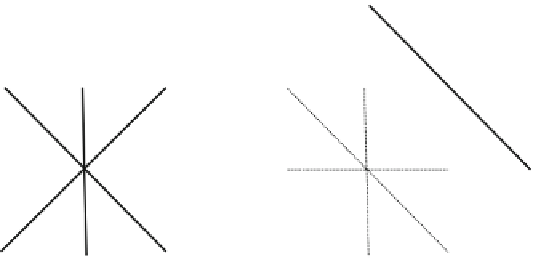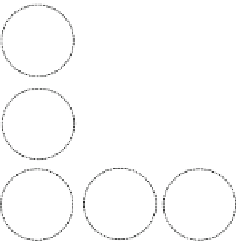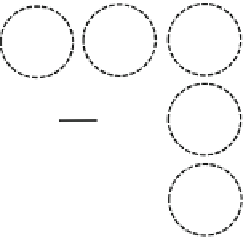Information Technology Reference
In-Depth Information
eliminated). The information may be used for the optimization of the activity of the
system (the assessment of the global state of resources).
4.4 Information in the Agent System
Making decisions by a given agent existing in the node depends on what kind of
information it may receive as a result of observation and in what way it actually uses
information. The extension of the observation process makes it possible to take more
rational decisions about the activities of a given agent. The observation may involve
various areas and allows the agent to gain different information.
As to the area subject to observation, we may consider the following situations:
•
a given agent existing in the node denoted as
w
n
,
m
may observe only the node in
which it exists,
•
the agent may observe the neighbouring nodes:
w
n
−
1
,
m
−
1
,
w
n
−
1
,
m
,
w
n
−
1
,
m
+
1
,
w
n
,
m
−
1
,
w
n
,
m
+
1
,
w
n
+
1
,
m
−
1
,
w
n
+
1
,
m
,
w
n
+
1
,
m
+
1
, as presented in Fig.
4.4
.
In the agent system we described, there are many possibilities of getting pieces
of information about the environment that may make the model m' more precise,
and consequently allow the improvement of effectiveness of the decision-making
process. Below, we present an overview of some types of observation and ways of
decision-making that seem to be most characteristic. In particular, the agent (of type
A
g
0
,
A
g
1
or
A
g
2
) existing in a given node may get the following information:
•
It has access to information about the amount of the resource in this node, as well
as to the amount of the resource in the neighbouring nodes.
W
n-2,m+2
W
n-2,m
W
n-2,m+1
W
n-1,m-1
W
n-1,m
W
n-1,m+1
W
n-1,m+2
W
n-1,m-1
W
n-1,m
W
n-1,m+1
W
n,m-1
W
n,m+2
W
n,m
W
n,m+1
W
n,m-1
W
n,m
W
n,m+1
W
n+1,m-1
W
n+1,m
W
n+1,m+1
W
n+1,m-1
W
n+1,m
W
n+1,m+1
m
m
Fig. 4.4
Schema illustrating the structure of neighbouring nodes and the use of the models
m
and
m
by the agents


















